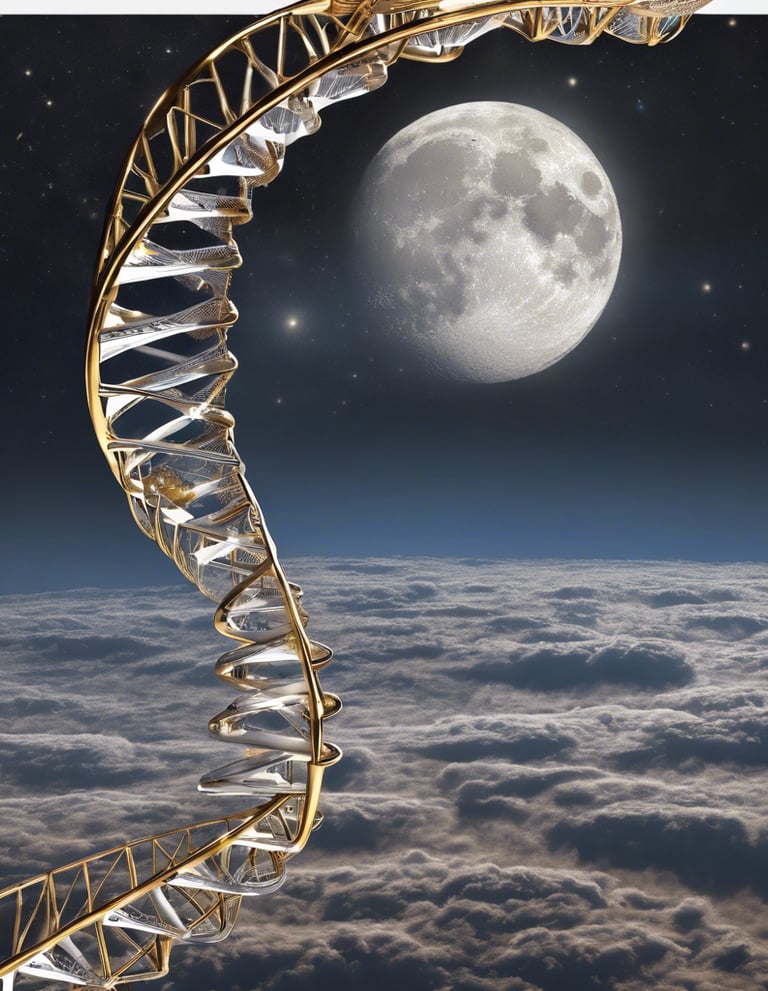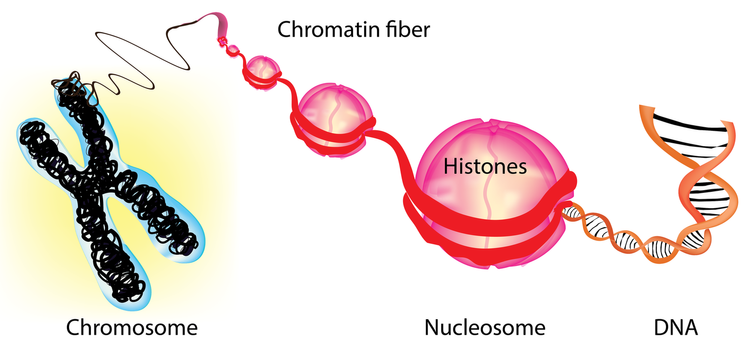To the moon and back
How 3.2 billion base-pairs of DNA fit into a single cell
5/28/20242 min read


This post is a bit of a mixture of the first two blog posts in that I will talk about DNA but also that it will include some bind boggling information and some more big numbers. You see, the 3.2 billion base-pairs of DNA that I described is just one copy. In reality most of the cells in our body contain two copies of the genome, so that's 6.4 billion base-pairs.
As I mentioned previously, atoms are very small. Molecules are bigger, but in the grand scheme of things still pretty small. But even small things begin to seem quite big when they have 6.4 billion components. In fact if you stretched out all the DNA in a single cell it would measure around 2 metres in length! This is remarkable in itself, but all that DNA has to fit inside the nucleus of a cell which is 5-20 micrometers across. Let's think about that for a minute...
A centimetre (cm) is pretty easy to imagine - we come across them all the time. We know that a millimetre (mm) is 1/10 of a cm. A micrometre (µm) is 1/1000 of a mm (for context the smallest things visible to the naked human eye are around 40-50µm). So we are talking about trying to fit 2 metres of DNA into a space so small that we can't see it without the help of a microscope.
This incredible feat is achieved by wrapping the DNA around proteins called histones to form a nucleosome. More wrapping of DNA follows until a series of nucleosomes form chromatin and eventually a chromosome. I realise I've just hit you with a bunch of words that you might not be familiar with, but hopefully the diagram below with be useful to understand what I'm getting at.
Isn't biology amazing?!
But wait, that's just one cell! There are around 30 trillion cells in the average human body. So that's 30 trillion x 2 metres. In fact if you unravelled all the DNA in the average human end-to-end it would stretch to the moon and back...
1500 times!!!
It would even stretch to the sun and back about 4 times!
If that doesn't blow your mind, wait til I tell you that your body probably contains more bacterial cells than human ones, more on that later...


